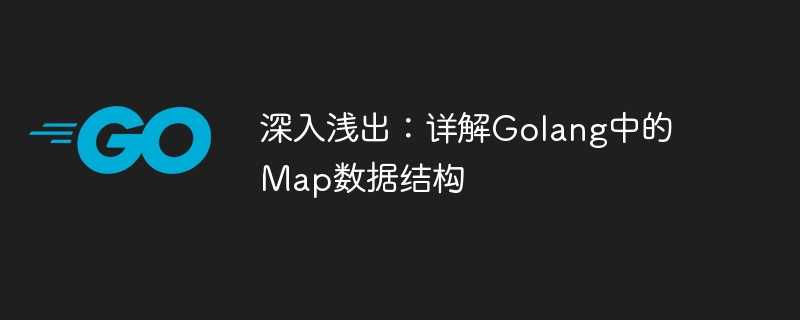

Map in Golang is a very commonly used data structure, which can associate a key with a value. Map is very useful in many situations, such as counting the number of times a word appears in an article, saving students' test scores, etc.
This article will introduce Map in Golang in a simple and easy-to-understand manner, including what Map is, the characteristics of Map, how to use Map, and traversing Map, etc., and will also gradually write some code examples to consolidate the knowledge learned.
1. What is Map?
Map is a data structure that maps keys to values. Each key can only appear once, and the corresponding value can appear repeatedly. In Golang, the implementation of Map is similar to a hash table, which can quickly perform insertion, deletion and search operations.
The declaration format of Map is:
map[KeyType]ValueType
where KeyType and ValueType represent the key and value types respectively. The following is an example:
var students map[string]int
This example defines a map, the key type is string, and the value type is int. Before initialization, this map is nil and cannot be used.
2. Map characteristics
a. Structure with the following two fields:
type Key struct {
x, y int
}b. Array type , and the element type is a type that supports "==" and "!=" operators:
type Key [2]int
c. Interface type, and the dynamic value is not nil:
type Key interface {
}students := make(map[string]int)
students["Tom"] = 90 students["Jerry"] = 80 students["Mary"] = 95
If you want to modify the Map elements, just need to use the same key. If you want to add a new key-value pair, just write the value in the key position.
delete(students, "Jerry")
The first parameter of the delete function is the Map, and the second parameter is the key to be deleted.
score, ok := students["Tom"]
if ok {
fmt.Printf("Tom's score is %d.
", score)
} else {
fmt.Println("Tom not found.")
}3. How to use Map
Let’s look at a specific example below, assuming We have a string and we want to count the number of occurrences of each word in it.
package main
import (
"fmt"
"strings"
)
func main() {
str := "Go is a programming language.Golang is a updated version of the Go language. It was created by Google."
// 将字符串按照空格分隔成切片
words := strings.Fields(str)
// 创建一个空Map,用于统计单词出现次数
count := make(map[string]int)
// 统计单词出现次数
for _, word := range words {
count[word]++
}
// 打印结果
for word, cnt := range count {
fmt.Printf("%s: %d
", word, cnt)
}
}In this example, we first use the Fields function in the strings package to separate the string into a string slice, and then create an empty Map. Then, use a for loop to use each word in the slice as a key, add 1 to the corresponding value, and finally traverse the Map and print the number of times each word appears.
4. Traverse Map
In Golang, you can use a for loop to traverse Map. The key-value pairs returned when traversing the Map are unordered.
for key := range students {
fmt.Println(key)
}for _, value := range students {
fmt.Println(value)
}for key, value := range students {
fmt.Printf("key: %s, value: %d
", key, value)
}The above traversal methods can be used for traversing any Map, whether it is a Map with string keys or a Map with other types of keys.
Summary
This article mainly introduces Map in Golang, including the definition, characteristics, usage and traversal of Map, etc. In actual development, Map is a very commonly used data structure, and it is very necessary for Golang developers to master the use of Map.
The above is the detailed content of A concise guide to deeply analyze the Map data structure in Golang. For more information, please follow other related articles on the PHP Chinese website!
 How to define variables in golang
How to define variables in golang
 What are the data conversion methods in golang?
What are the data conversion methods in golang?
 What are the commonly used libraries in golang?
What are the commonly used libraries in golang?
 What is the difference between golang and python
What is the difference between golang and python
 The main components that make up the CPU
The main components that make up the CPU
 How to read data from excel file in python
How to read data from excel file in python
 ASCII code comparison table
ASCII code comparison table
 What is the return value of the function
What is the return value of the function




